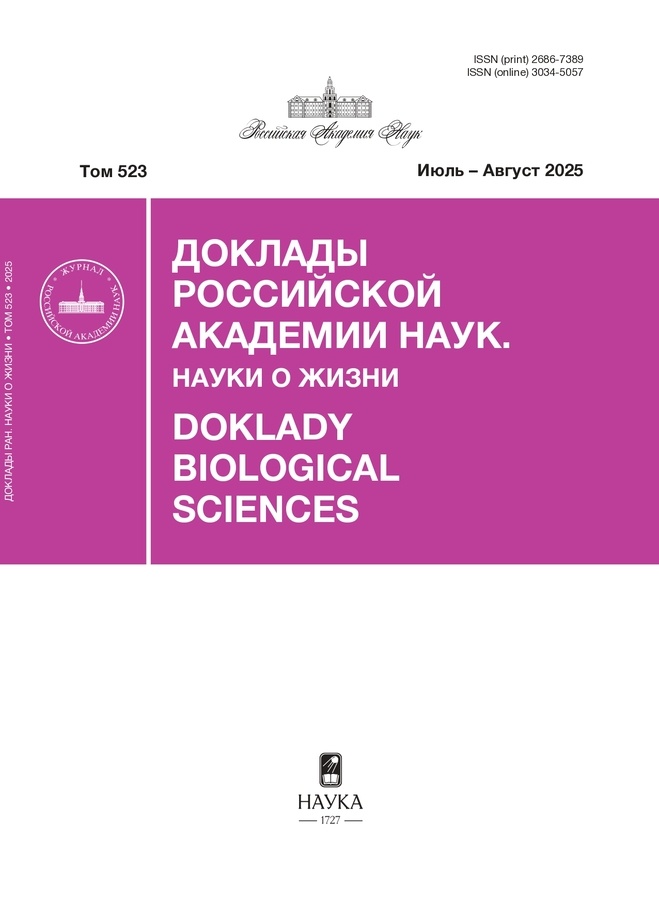Изучение TRPV1-каналов центральной нервной системы и их влияния на тревожное состояние у мышей ICR
- Авторы: Павлов В.М.1,2, Федотова А.Ю.1,2, Андреев Я.А.3, Паликов В.А.1,2, Дьяченко И.А.1,2
-
Учреждения:
- Филиал Института биоорганической химии им. академиков М.М. Шемякина и Ю.А. Овчинникова РАН
- Пущинский филиал федерального государственного бюджетного образовательного учреждения высшего образования «Российский биотехнологический университет (РОСБИОТЕХ)»
- Институт биоорганической химии им. академиков М.М. Шемякина и Ю.А. Овчинникова РАН
- Выпуск: Том 518, № 1 (2024)
- Страницы: 81-85
- Раздел: Статьи
- URL: https://gynecology.orscience.ru/2686-7389/article/view/651403
- DOI: https://doi.org/10.31857/S2686738924050145
- ID: 651403
Цитировать
Полный текст
Аннотация
Канал TRPV1 играет важную роль в различных структурах нервной системы, включая периферические и центральные нейроны, сенсорные ганглии, спинной мозг и различные участки головного мозга. Он участвует в различных нейрональных процессах, таких как восприятие и передача болевого сигнала. TRPV1 как детектор потенциально опасных сигналов может оказывать существенное влияние на реакции организма на стресс. Подавление активности TRPV1 приводит к уменьшению уровня тревожности у животных, что свидетельствует о участии этого канала в психоэмоциональной регуляции. Пептид APHC3 является высокоэффективным антагонистом канала TRPV1. В ходе данного исследования мы показали, что данный пептид обладает выраженным анксиолитическим эффектом, снижая уровень тревожности у исследуемых животных.
Ключевые слова
Полный текст
Об авторах
В. М. Павлов
Филиал Института биоорганической химии им. академиков М.М. Шемякина и Ю.А. Овчинникова РАН; Пущинский филиал федерального государственного бюджетного образовательного учреждения высшего образования «Российский биотехнологический университет (РОСБИОТЕХ)»
Автор, ответственный за переписку.
Email: v.m.pavlov29@gmail.com
Россия, Московская область, Пущино; Пущино
А. Ю. Федотова
Филиал Института биоорганической химии им. академиков М.М. Шемякина и Ю.А. Овчинникова РАН; Пущинский филиал федерального государственного бюджетного образовательного учреждения высшего образования «Российский биотехнологический университет (РОСБИОТЕХ)»
Email: v.m.pavlov29@gmail.com
Россия, Московская область, Пущино; Пущино
Я. А. Андреев
Институт биоорганической химии им. академиков М.М. Шемякина и Ю.А. Овчинникова РАН
Email: v.m.pavlov29@gmail.com
Россия, Москва
В. А. Паликов
Филиал Института биоорганической химии им. академиков М.М. Шемякина и Ю.А. Овчинникова РАН; Пущинский филиал федерального государственного бюджетного образовательного учреждения высшего образования «Российский биотехнологический университет (РОСБИОТЕХ)»
Email: v.m.pavlov29@gmail.com
Московская область, Пущино; Пущино
И. А. Дьяченко
Филиал Института биоорганической химии им. академиков М.М. Шемякина и Ю.А. Овчинникова РАН; Пущинский филиал федерального государственного бюджетного образовательного учреждения высшего образования «Российский биотехнологический университет (РОСБИОТЕХ)»
Email: v.m.pavlov29@gmail.com
Россия, Московская область, Пущино; Пущино
Список литературы
- Martins, D et al. “Hotheaded”: the role OF TRPV1 in brain functions”. // Neuropharmacology vol. 85 (2014) P. 151–157.
- Ho, Karen W et al. “TRPV1: a stress response protein in the central nervous system.” // American journal of neurodegenerative disease vol. 1,1 (2012) P. 1–14.
- Nater, Urs M et al. “Biomarkers of stress in behavioural medicine”. // Current opinion in psychiatry vol. 26,5 (2013): 440–5.
- Marchalant Yannick et al. “Cannabinoids attenuate the effects of aging upon neuroinflammation and neurogenesis”. // Neurobiology of disease vol. 34,2 (2009): 300–7.
- Marrone Maria Cristina et al. “TRPV1 channels are critical brain inflammation detectors and neuropathic pain biomarkers in mice.” // Nature communications vol. 8 15292. 10 May. 2017,
- Aguiar Daniele C et al. “Anxiolytic-like effects induced by blockade of transient receptor potential vanilloid type 1 (TRPV1) channels in the medial prefrontal cortex of rats.” // Psychopharmacology vol. 205,2 (2009) P. 217–225.
- Marsch Rudolph et al. Reduced anxiety, conditioned fear, and hippocampal long-term potentiation in transient receptor potential vanilloid type 1 receptor-deficient mice. // The Journal of neuroscience: the official journal of the Society for Neuroscience vol. 27,4 (2007) P. 832–839.
- Brown Travis E et al. “Loss of interneuron LTD and attenuated pyramidal cell LTP in Trpv1 and Trpv3 KO mice”. // Hippocampus vol. 23,8 (2013) P. 662–71.
- Atrooz Fatin et al. “Understanding stress: Insights from rodent models”. // Current research in neurobiology vol. 2 100013. 23 May. 2021
- Andreev Yaroslav A et al. “Polypeptide modulators of TRPV1 produce analgesia without hyperthermia”. // Marine drugs vol. 11, 12 P. 5100–5115. 16 Dec. 2013
- Kozlov S. A., et al. “New polypeptide components from the Heteractis crispa sea anemone with analgesic activity”. // Russian journal of bioorganic chemistry 35 (2009) P.711–719.
- Logashina Yulia A et al. “Anti-Inflammatory and Analgesic Effects of TRPV1 Polypeptide Modulator APHC3 in Models of Osteo- and Rheumatoid Arthritis”. // Marine drugs vol. 19,1 P.39. 17 Jan. 2021
- Garami A et al. “TRPV1 antagonists that cause hypothermia, instead of hyperthermia, in rodents: Compounds’ pharmacological profiles, in vivo targets, thermoeffectors recruited and implications for drug development”. // Acta physiologica (Oxford, England) vol. 223,3 (2018): e13038. doi: 10.1111/apha.1303
- Kolesova Y.S., Stroylova Y.Y., et al. “Modulation of TRPV1 and TRPA1 Channels Function by Sea Anemones’ Peptides Enhances the Viability of SH-SY5Y Cell Model of Parkinson’s Disease”. // International Journal of Molecular Sciences. 2024; 25(1):368.
- Esipov Roman S. et al. “Pilot production of the recombinant peptide toxin of Heteractis crispa as a potential analgesic by intein-mediated technology”. // Protein expression and purification vol. 145 (2018): 71–76.
- Миронов А.Н. и др. Руководство по проведению доклинических исследований лекарственных средств. //М.: Гриф и К. – 2012. – Т. 944.
Дополнительные файлы










